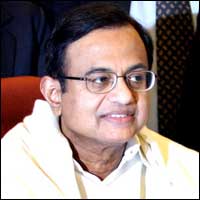Even as the budget estimates for the next financial year in the Interim Budget: 2014-15 presented by Finance Minister P. Chidambaram, on February 17, have to be taken only tentatively as the new government that takes over in next four-five months would take a call on these numbers. The revised estimates in the interim budget for the current year have surprised analysts. This is because there was widespread anticipation of a shoot-up in fiscal deficit number for the year, given the trends till December as available in CGA monthly data.
Thus, the fiscal deficit of Rs.5.16 trillion over April-December, which had shown 28 per cent escalation during the first 9 months of the year, is placed only marginally higher at Rs.5.25 trillion in RE for the whole year, indicating only a moderate increase of around 9.1 per cent over 2012-13. The deficit would be lower than Rs.5.42 trillion as per BE and as a ratio to GDPmp it would be 4.6 per cent against 4.8 per cent as per BE data. If this RE is to be realised, it would necessitate deficit or net borrowing of Rs.8,149 crore during January-March, which would be 90 per cent lower, relative to the last three months of 2012-13. This is a truly remarkable achievement, after allowing fiscal operations to go off-track for the earlier nine months.
|
GOVERNMENT FINANCE: 2013-14 (RE) (`CRORE)
|
|||
|
April-December
|
January-March (Balance)
|
April-March
|
|
| Net Tax Revenue |
517,661
|
318,365
|
836,026
|
| Non-tax Revenue |
116,272
|
76,954
|
193,226
|
| Recovery of loans |
8,038
|
2,764
|
10,802
|
| PSU equity disinvestment |
5,430
|
20,411
|
25,841
|
| Non-Plan Expenditure |
812,528
|
302,374
|
1,114,902
|
| Plan Expenditure |
351,263
|
124,269
|
475,532
|
| Total Expenditure |
991,123
|
426,643
|
1,590,434
|
| Fiscal Deficit |
404,699
|
8,149
|
524,539
|
In order to understand the math behind this magic, we undertook an exercise taking CGA data for April-December, the latest period for which the numbers are available, and juxtaposed them against RE for 2013-14 given in the interim budget. Our broad observations on the exercise are given below.
- Tax receipt would have to rise 24 per cent during January-March, more than three times the pace in the first 9 months. Last three months yield around a third of annual gross tax receipt. The growth would come essentially from customs, excise duty and service tax, with corporate tax and personal income tax likely playing subordinate role. Given the state of the economy, this looks unlikely.
- In non-tax revenue, the finance minister has banked on extra dividends from PSUs. Dividends and profits placed at Rs.88,188 crore in RE have surpassed BE by 19 per cent and shown y-o-y shoot up of 64 per cent. The increase in this source worked out to 65 per cent till December and would work out to 62 per cent during the last three months of the year. As owners of PSUs, the government has the right, as the finance minister stresses, to command PSU boards to cough up extra-large dividends, but this would obviously adversely affect self-financing and capex plans of the PSUs.
- Other non-tax revenue comprising largely one-time spectrum auction receipt had increased 11 per cent till December. For yielding an equivalent amount in next three months, this needs to go up 70 per cent on a y-o-y basis over this period. Even if this is accomplished, it is a non-recurring receipt.
- PSU equity share sales which were lower till December would increase 15 per cent in the last quarter. Several such share sales to public sector institutions were meant largely to shore up fiscal receipt and they were also below their economic valuation.
- Non-plan expenditure had escalated by 17 per cent to Rs.8.13 trillion till December. This would have to stagnate at around Rs.3.02 trillion in next three months if annual non-plan expenditure has to be contained at RE level. This is unrealistic and we suspect that several disbursements, particularly those on some subsidies, would be rolled over to the next year. By the way, though subsidies have overshot BE, these are placed marginally lower at Rs.2.55 trillion, on a y-o-y basis in 2013-14. Subsidies are budgeted to rise only marginally during the next year.
- Defence capital outlay would have to decline 31 per cent y-o-y during January-March if RE increase of 12 per cent for the year is to be reached.
- Plan expenditure had gone up 19 per cent to Rs.3.51 trillion till December; the pace would decline to 6 per cent in the last quarter to achieve 14 per cent for the year in terms of RE.
While we appreciate the overzealous approach by the finance minister to achieve FRBM targets on fiscal consolidation, its achievement necessitating large cutbacks in government expenditure, particularly plan account spending, would run counter to the requirement of a demand push in a sluggish economy. It may be noted that the government finances, which had gone off-track in H1 during 2012-13, were brought back on track in H2 by P. Chidambaram, largely through disbursement clips, sadly in plan expenditure, as a slowing economy did not help tax, non-tax receipt.
As for next year 2014-15, the BE numbers have assumed 13.4 per cent increase in GDPmp at current prices and around 6 per cent at constant prices. The feat would depend considerably on the southwest monsoon and the farm sector; non-farm sectors would depend on the outcome of general elections and on how fast the new government gets hold of the economy.











